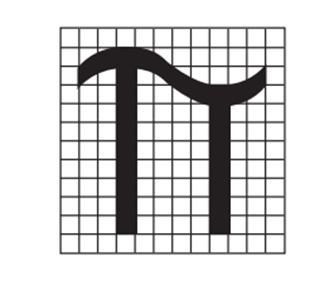Introduction to TPED
Introduction
The aim of Directive 2010/35/EU of the European Parliament and of the Council on Transportable Pressure Equipment (2010 TPED) is to promote the free movement of transportable pressure equipment (TPE) within the European Community (EC). It provides for a legal structure whereby TPE can be manufactured and sold and used throughout the EC without having to go through a local approval regime in every Member State.
‘2010 TPED’ means Directive 2010/35/EU of the European Parliament and of the Council on Transportable Pressure Equipment. This European Directive was transposed into Irish domestic legislation in 2011 and is known as European Communities (Carriage of Dangerous Goods by Road and use of Transportable Pressure Equipment) Regulations 2011, as amended.
What equipment is covered under TPED
The 2010 TPED applies to the design, manufacture, conformity assessment, periodic inspection, intermediate inspection, exceptional checks and reassessment of conformity of pressure receptacles and tanks used for the transport of Class 2 gases, covered respectively in Chapter 6.2 and Chapter 6.8 of the ADR.
It includes associated valves and other accessories, when appropriate, and includes both refillable and non-refillable pressure receptacles.
Definitions
Small receptacle containing gas (gas cartridge) means a non-refillable receptacle having a water capacity not exceeding 1000ml for receptacles made of mental and not exceeding 500 ml for receptacles made of synthetic material or glass, containing, under pressure, a gas or a mixture of gases. It may be fitted with a valve.
Cylinders means a pressure receptable of a water capacity not exceeding 150 litres.
Tank means a shell, including its service and structural equipment. When used alone, the term tank means a tank container, portable tank, demountable tank, or fixed tank as defined in this section, including tanks forming elements of battery vehicles or MEGS.
Accreditation body For the purposes of these Regulations, the accreditation body is responsible for the development and carrying out of procedures for the assessment and monitoring of notified bodies.
Notified bodies For the purposes of these Regulations, a notified body is a legal body appointed by a Member State, and whose appointment has been communicated by the notifying authority of that Member State to the Commission and the other Member States pursuant to Article 22 of the TPE Directive Information obligation of notified bodies
Exclusions
Equipment that is specifically excluded from the 2010 TPED is as follows:
› Aerosols (UN No. 1950)
› Open cryogenic receptacles › Gas cylinders for breathing apparatus
› Fire extinguishers (UN No. 1044)
› TPE exempted under ADR 1.1.3.2, exemptions related to the carriage of gases
› TPE exempted under ADR Chapter 3.3, special provisions applicable to certain articles or substances
Market Surveillance
The Health and Safety Authority is the market surveillance authority in Ireland in relation to TPE and for the purposes of Part 9 of the Regulations.
Where there is sufficient reason to believe that particular TPE presents a risk to the health and safety of persons or to other aspects of public interest protection, the market surveillance authority may carry out an evaluation of the TPE. The relevant economic operator, which under the 2010 TPED, may be the manufacturer, the authorised representative, the importer, the distributor or the owner of the TPE (all of which are defined in Article 2 of the directive), must co-operate with the market surveillance authority, including granting access to their premises or providing samples on request. Depending on the outcome of the evaluation, if the TPE is found either
- not to be compliant with the requirements of the ADR and the 2010 TPED, or
- to be compliant with the requirements of the ADR and the 2010 TPED but still presents a risk
the market surveillance authority may require the relevant economic operator to take corrective action in relation to the TPE, to withdraw it from the market, or to recall it within a reasonable period.
What is a certificate of conformity?
A Health and Safety Authority inspector may visit premises where gas cartridges, gas cylinders and equipment are sold and request a certificate of conformity for gas cartridges, gas cylinders or tanks.
Conformity assessment means the process of verifying the conformity of a product according to the ADR provisions of sections 1.8.6 and 1.8.7 related to type examination, supervision of manufacture and initial inspection and testing.
What is a Pi mark?
Transportable pressure equipment must bear a mark indicating its compliance with the ADR and the TPED to ensure its free movement and free use. The pi mark (π) must be applied in accordance with Chapter 3 of the 2010 TPED, and will be in the form of a symbol as follows

The dimensions of the marking must be as laid out in Article 15 of the 2010 TPED. TPE which was placed on the market before the implementation date of the 1999 TPED does not need to bear the π mark. However, if the TPE is reassessed for conformity, the π mark will be applied as described above.